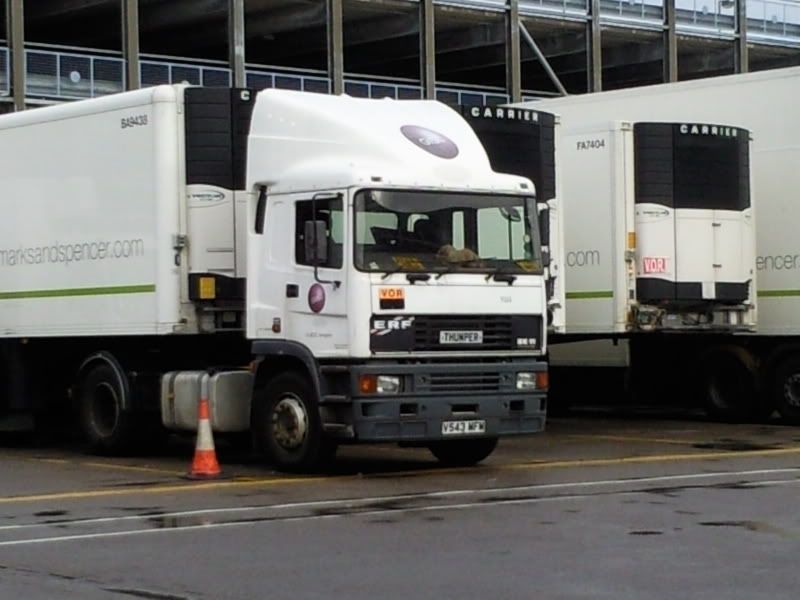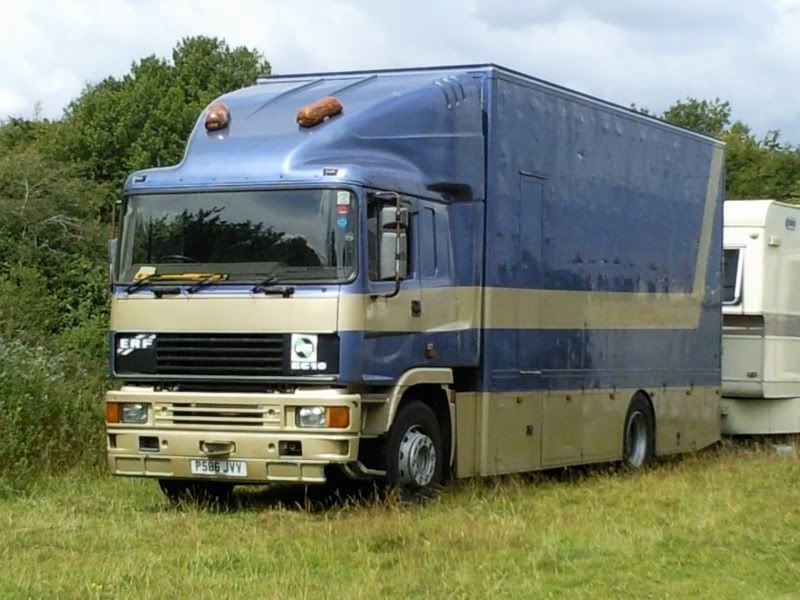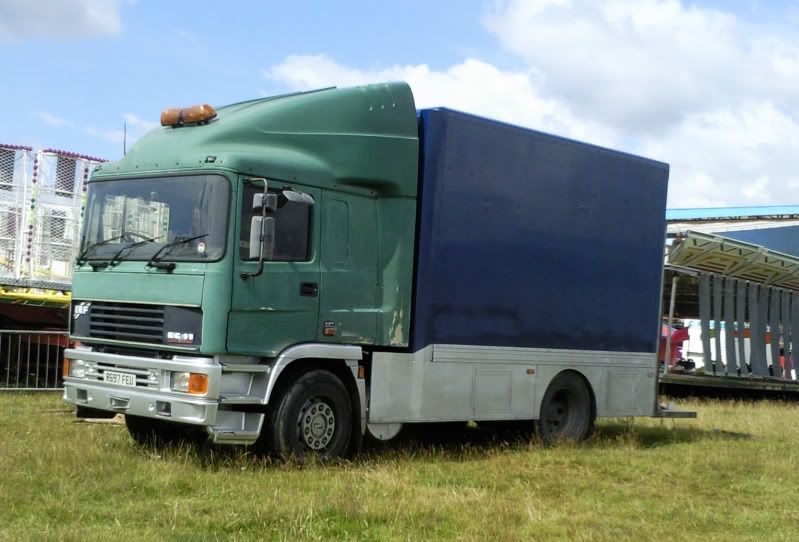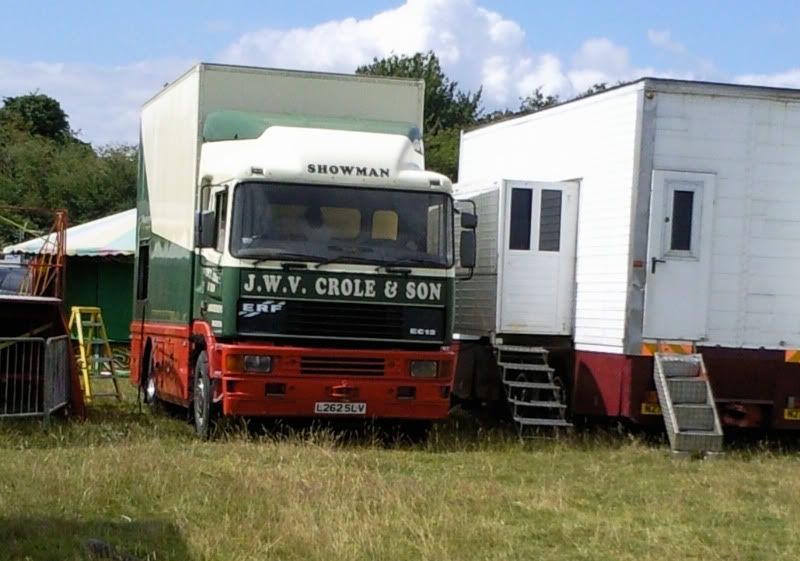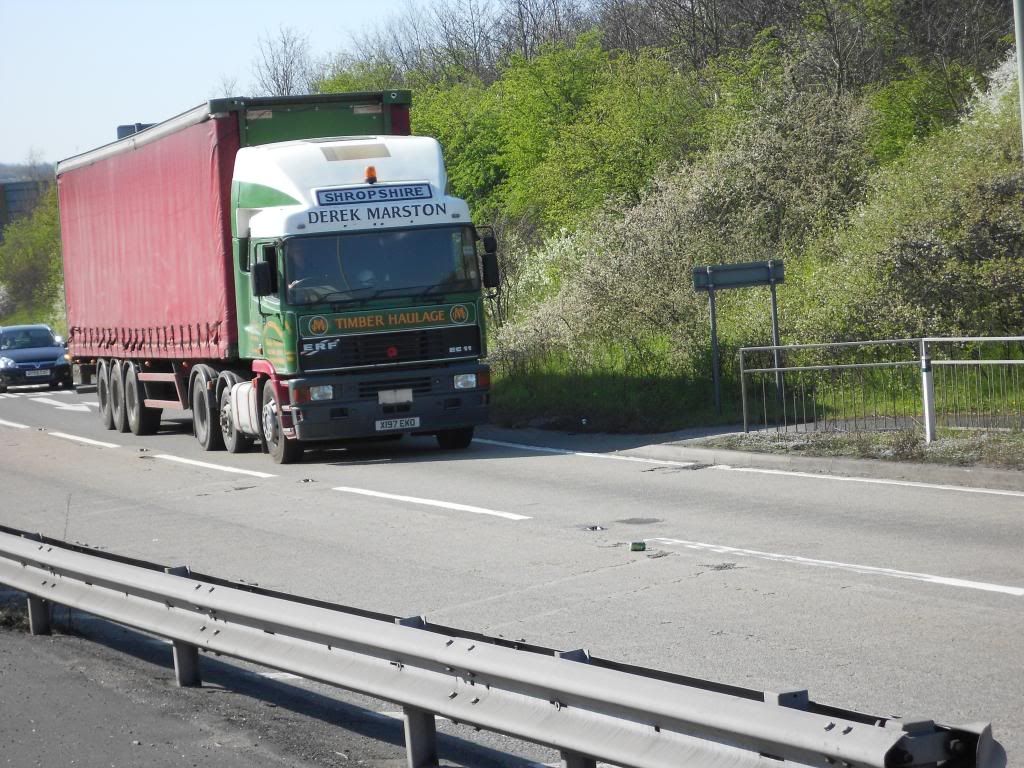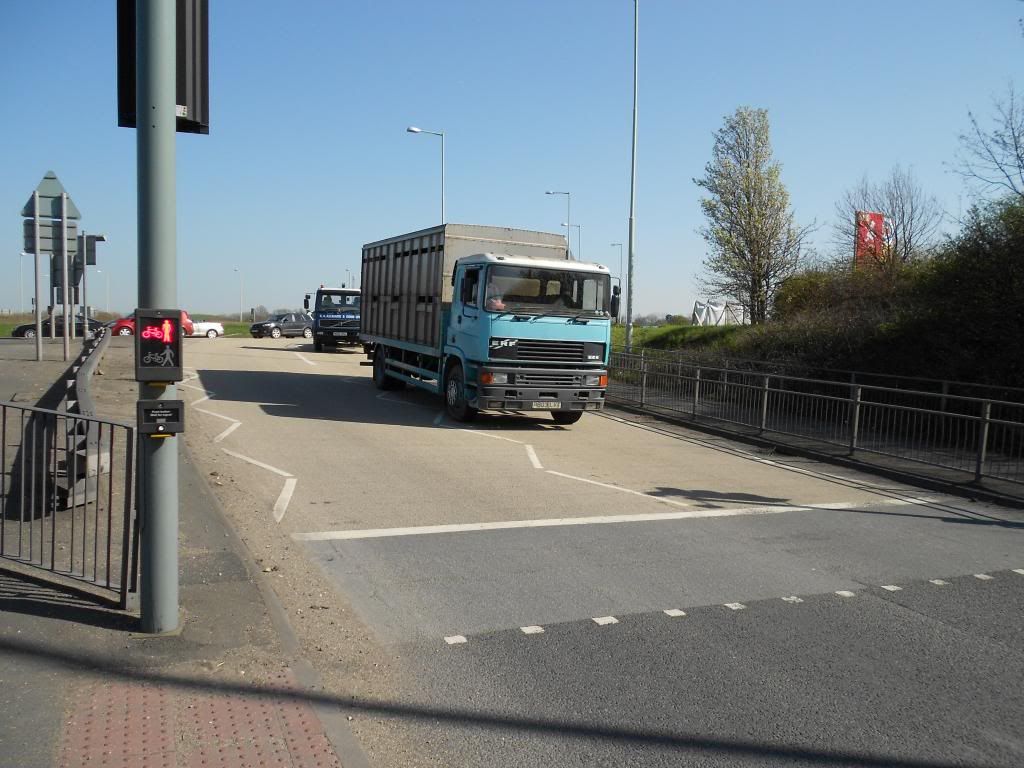Your right about that, fantastic box, had one in my last motor, an EC11 380 8x4 97’ tanker. I’d have it back tommorow over the FM460 8 wheel tanker i drive now, it was a loverly motor. ![]()
![]()
![]()
Kev73:
I seem to recall reading somewhere that ERF stopped using the eaton t/s and went onto an Eaton 16 speed synchro box at some stage,is that correct?If so,roughly when did they change,and why?
Late ec models you could get a 16 speed eaton,the twin splits are a good box ,the main issues with a twin split is the rear end which can be done up for about £500 ish,there ,a 3 types of twin split the strongest version is for the 14l 525.
The Eaton 16spd was made standard box by ERF when they came out, but proved troublesome early on and the Twinsplitter was reinstated as standard box and the Eaton made an option until the they couldnt fit the TS anymore.
I have’nt the pleasure of a 16 spd Easton, but am told that was’nt a brilliant box and not up to the usual Eaton/Fuller standard.
I’ve driven several ERFs with twin splitters and an Iveco with one as well. All were brilliant. The only two 16-speed synchro boxes I’ve liked were the Volvo fitted to the F88290 (providing it didn’t break) and the ZF as fitted to various Dafs. Just as an aside, I once had a Daf with a nine-speed Fuller, which was totally spoilt by having no inertia brake.
Retired Old ■■■■:
I’ve driven several ERFs with twin splitters and an Iveco with one as well. All were brilliant. The only two 16-speed synchro boxes I’ve like were the Volvo fitted to the F88290 (providing it didn’t break) and the ZF as fitted to various Dafs. Just as an aside, I once had a Daf with a nine-speed Fuller, which was totally spoilt by having no inertia brake.
Hi ROF, If you mean the clutch brake that was fitted with the Fuller box, on the Daf it was normally triggered on the bottom inch of the clutch pedal travel, it worked off a switch on the pedal but could often play up.
Oh dear, Trev, don’t tell me I drove it for all those miles without one when a simple repair would have made it so much better?
r.o.f. are you telling us that you drove a 9 speed fuller and actually used the clutch to change gear ? shame on you .
Hi Rigsby never using a twin splitter box what was the best way too use it ? With or without the clutch and block changes etc. I have only once used a crash box ones . Only syncro boxes and never a twin splitter . Tony
on normal running i would use every other gear going up the box , using the clutch until you got the timing right . once you had it worked out no need of the clutch . for a super quick change , preselect next gear , pull the gearstick into neutral and immediately back into gear ( split second move ) . done that way you could change gear in less than a second , very handy for uphill changes . strange isn’t it i havn’t touched a twin splitter since 1999 but the knowledge stuck in there with all the other useless information . dave
No you never needed the clutch on the move but the clutch brake was needed to select a gear cleanly whilst stationary, to stop the grating of teeth and a lurch forward.
rigsby:
r.o.f. are you telling us that you drove a 9 speed fuller and actually used the clutch to change gear ? shame on you .
No, not after I found that there was no clutch brake to help with upward changes going uphill! Apart from using the clutch brake I never used the clutch on any of the Eaton/Fuller boxes, although things may have changed if I had come across a synchro version.
The “quick shift” method of gearchanging on the twin splitter was what we used to call “Bunny-Hopping” if I remember correctly.
Straighteight
You are right about the ERF as an 8 wheeler.
I’ve always been torn between which would be my favourite,it’s only a short list,
AEC Mammoth Major MkV
ERF C series Fuller Box
ERF EC series ■■■■■■■ and TwinSplitter
I’d take anyone of them down the road tomorrow, but not too early and not too far , this retirement lark grows on you!
Cheers Bassman
Hi Bassman,
Yeah, im looking foward to the retirement thing, early preferably!!. Mine had the rubber-suspended back-end, never had no real problems with traction when empty, if it did start to slip, raising the tank a bit used to get enough weight on the rear to get me out of trouble. Only problem i ever had with the Twinsplitter was a knackerd fork, other than that it was a sturdy old box. It had a gearbox overhaul when it was 9 yrs old, and when the firm sold it at 15yrs old it still felt great and worked a treat. The M11 engine had couple of turbo’s, and was ready for pistons and liners when it was sold, but it was ultra reliable in all the 15 yrs they owned it. The only regular thing that needed doing were the elephant’s feet on the rear which only tended to last 2yrs or 3 if you were lucky. It weighed a full ton lighter than the FM i drive now, even more admirable when considering that the the ERF had a tipping tank, larger pump plus small jetting pump with Pressure hose and reel, whist the Volvo is only fitted with non tipping tank and no jetting gear!!! ![]()
marky:
Dan Punchard:
I haven’t seen many b series with the smaller type rear window normaly found on the c series,the deep window was great for backing under a trailer.They were sold as the ‘Super B-Series’ and were built to be as light as possible. The back panel of the cab was essentially that of the C-Series, with ERF cottoning-on to the fact that plastic is lighter than glass - so the size of the window was shrunk. I believe the RR265L and Gardner 8LXB-engined versions of this (what was essentially) cross-over tractor were capable of tareing-off at less than 5.6 tonnes.
Was it the 8LXB, Mark, or the 6LXCT, that was marketed as super light?
Pair of yard shunters at Gits in Hemel, 2010:
Fairground on Hungerford Common, 2012 (I think the third one, L262 SLV, is ex-Gits):
240 Gardner:
marky:
Dan Punchard:
I haven’t seen many b series with the smaller type rear window normaly found on the c series,the deep window was great for backing under a trailer.They were sold as the ‘Super B-Series’ and were built to be as light as possible. The back panel of the cab was essentially that of the C-Series, with ERF cottoning-on to the fact that plastic is lighter than glass - so the size of the window was shrunk. I believe the RR265L and Gardner 8LXB-engined versions of this (what was essentially) cross-over tractor were capable of tareing-off at less than 5.6 tonnes.
Was it the 8LXB, Mark, or the 6LXCT, that was marketed as super light?
it was the ones fitted with the 6LXCTs we ran about 20 day cabbed C Series weighing in at about 5 1/2 ton we used some of them on shunting between Melton Mowbray and our depot in Nottingham on a Pedigree pet food contract we had they were so light that even with a curtainsider we could carry just over 21 tonnes and with a 40 foot flat nearly 22 tonnes not bad for 4 axle artic they gave us great service a bit slow on the hills but superb on fuel and reliability most of them were kept for up to 12 years on other work we had and were double and even tripled trunked
they did enormous mileage with very little engine trouble other than injectors and the odd head gasket mind you they did get over regular oil changes and we used top grade engine oil which was expensive but it turn out to be cheaper in the long run not like the L10 ■■■■■■■ we used but that’s another story
Straight Eight
When I first drove a C series with the rubber suspension it was a bit of shock after the leaf springs on the LV’s and B series. Those you drove by the seat of your pants ,you could feel how much they were rolling on a bend. Then you went out in a C series and they were a lot stiffer and didn’t take corners as well until you got used to the different handling.
Maintenance wise the rubber suspension was a lot better.
The only problem I can recall with a Twin Splitter was not being able to hit that top C note in the sounds that came from the gearbox when I first got one .
Cheers Bassman
![]()
